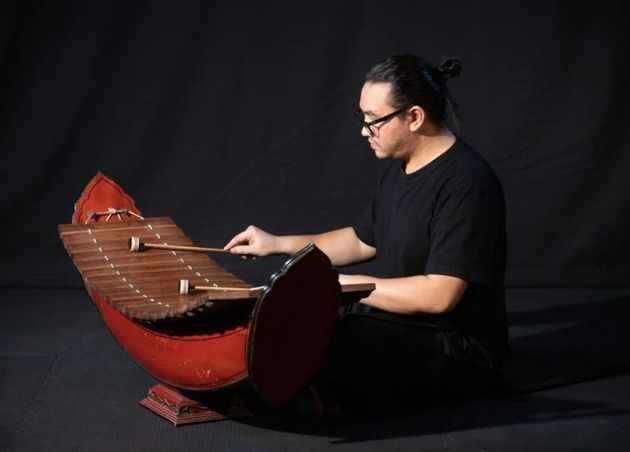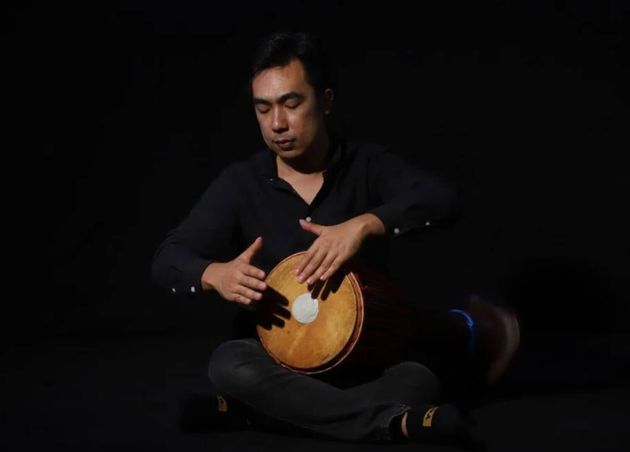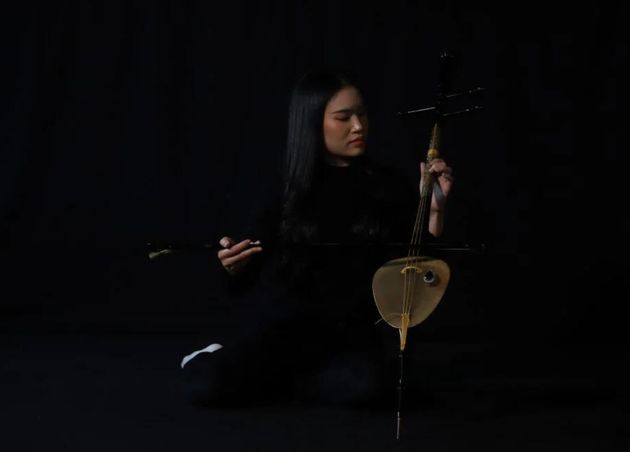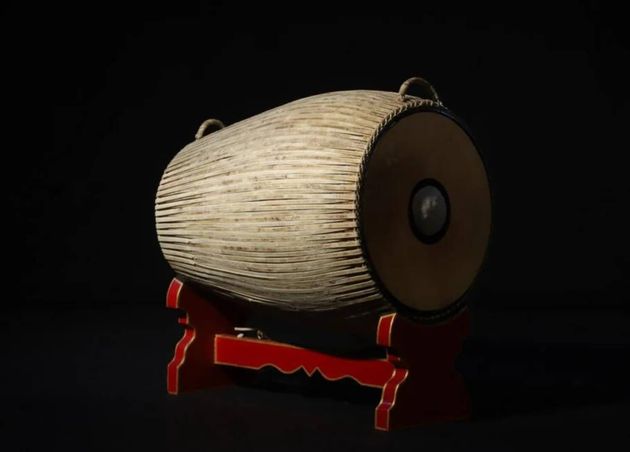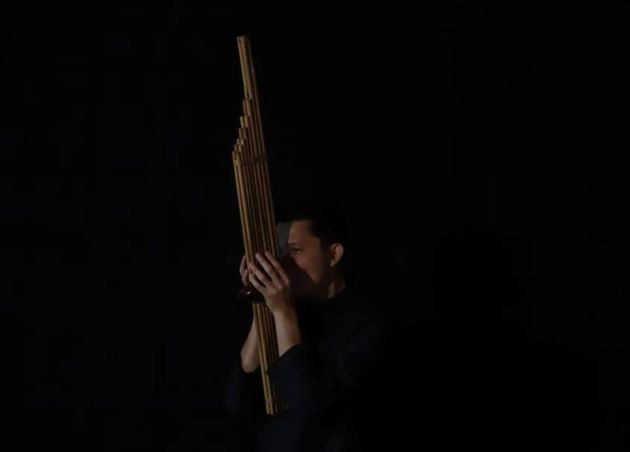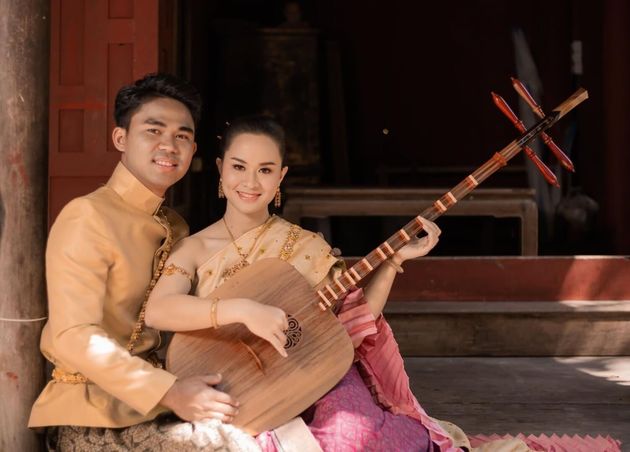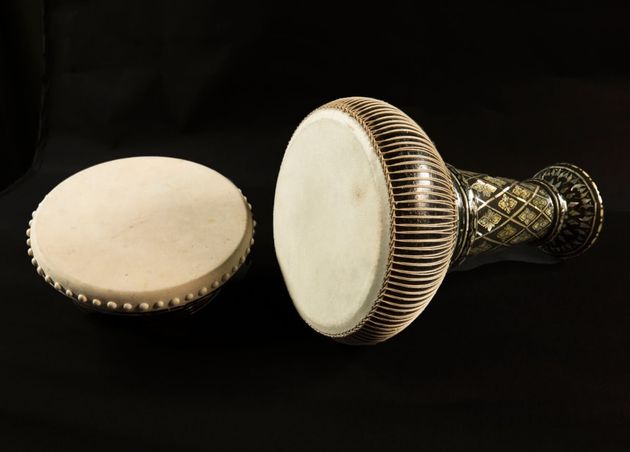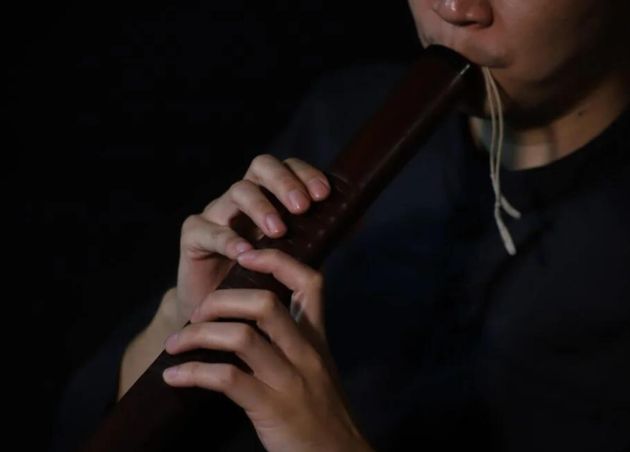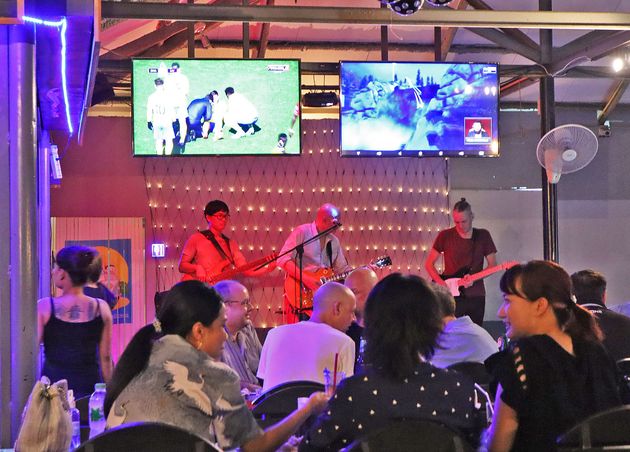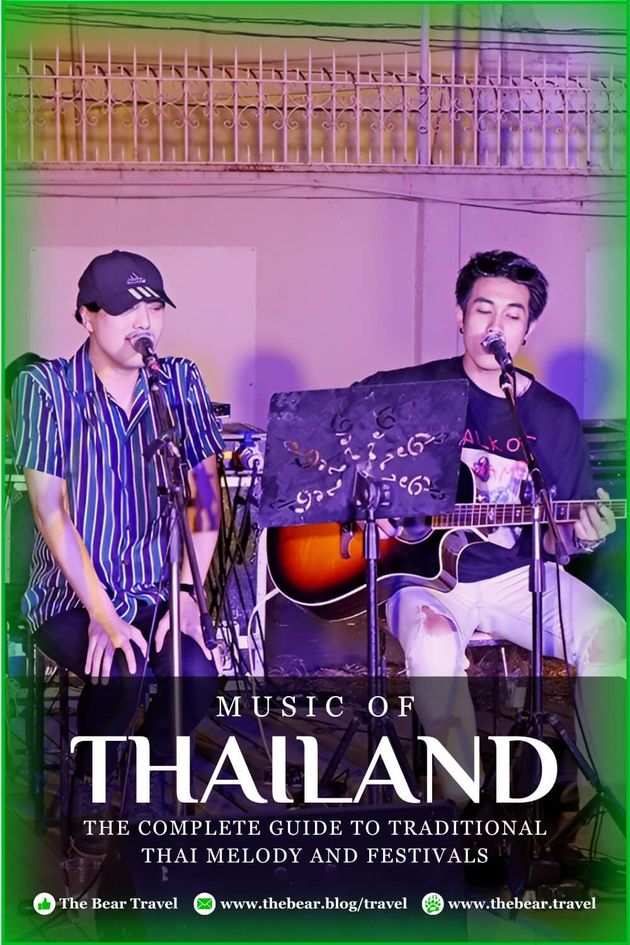Music of Thailand: The Complete Guide to Traditional Thai Melody and Festivals
Sawadee ka (สวัสดีค่ะ)! 🙏 Welcome to a journey through the melodic heart of Thailand, where every note is a thread in the rich tapestry of our cultural heritage. Traditional Thai music isn’t just something we hear; it’s something we feel deeply—the soundtrack of our lives 🐻 From the ancient court music that once echoed through royal halls to the vibrant pop songs that fill our streets today, Thai music is just as diverse and colorful as our Kingdom itself 🇹🇭
What makes our music truly special is its deep connection to Buddhism, which has shaped our melodies, rhythms, and even the instruments we use. You’ll notice that the music is often tied to different festivals and ceremonies—it's almost impossible to imagine a celebration here without it! The complex rhythms, distinctive melodies, and intricate harmonies give Thai music its unique character, making it a cherished part of our identity.
In this guide, I’m excited to explore with you the different aspects of traditional Thai music and the festivals that showcase it. So, let's dive into the Complete Guide to Traditional Thai Music and Music Festivals—get ready to experience it like a local while immersing yourself in the sounds that make Thailand so special!
🐻 Bear Outline
Introduction to Traditional Thai Music
Overview of Traditional Thai Music
When we think about traditional Thai music, I personally hear the heartbeat of Thailand itself—a rhythm that has pulsed through our culture for centuries. One of the most fascinating aspects of our music is the microtonal tuning system. Unlike Western music, which uses semitones, our system plays with smaller intervals, creating a sound that’s uniquely Thai. This distinctive tuning, deeply influenced by ancient Khmer music, which was prevalent in ancient Siam, gives our melodies a resonance that feels both ancient and timeless.
Traditional Thai music is incredibly diverse, encompassing various genres, instruments, and styles. You’ll hear everything from the elegant tones of court music to the lively rhythms of folk songs. And it’s not just the music itself that’s varied—it’s also the instruments we use. Think of the Khaen (แคน), a bamboo mouth organ that breathes life into the countryside, or the Ranad/Ranat (ระนาด), our version of a xylophone, whose bright notes add color to every celebration.
Importance of Music in Thai Culture
Music is more than just sound in Thailand—it’s woven into the very fabric of our lives. It’s hard to imagine a festival or ceremony without the accompaniment of traditional music, which is as much a part of our celebrations as the food and the fun. Our music is deeply rooted in Buddhism, often playing a central role in religious ceremonies. But it’s also there during our most joyful moments, like the Songkran Festival (Thai New Year), where music fills the air as we welcome the Thai New Year with water fights and parades.
Traditional Thai music is a vibrant expression of our cultural heritage, reflecting the diversity and richness of our history. It might take a little getting used to if you’re more familiar with Western music, but once you tune into its unique rhythms and melodies, you’ll find yourself captivated by its beauty and artistry.
🐻 Trivia!
Traditional Thai music is a unique and rich art form deeply intertwined with the country's culture and history.
History of Music in Thailand
Origins and Influences
Thai music has a fascinating history, deeply intertwined with our cultural roots and influenced by our neighbors. Growing up here, I’ve always been surrounded by sounds that reflect not just our own traditions but also the melodies and rhythms brought by influences from Laos, Cambodia, and Malaysia. These neighboring cultures have left their mark, helping to shape what we now proudly call traditional Thai music.
In its essence, traditional Thai music blends a variety of instruments—percussion, strings, and wind—that together create a sound that’s uniquely ours. Whether it’s the lively beats of drums or the delicate notes of the “Pi” (ปี่, a bamboo flute), the music often accompanies singing and dancing, making every performance a multi-sensory experience.
One of the oldest and most revered forms of traditional Thai music is "Khrueang Sai" (เครื่องสาย, Thai String Musical Ensemble), a genre that’s close to my heart. Imagine the sound of the Pi (ปี่) drifting through the air, accompanied by the deep, resonant thump of the "Klong Yao" (กลองยาว) drum. Originally played in royal courts and temple ceremonies, Khrueang Sai (เครื่องสาย) is still performed today at traditional events like weddings and religious ceremonies, keeping our ancient traditions alive.
Evolution Through the Ages
Thai music has never stood still—it's always been evolving, adapting to the times while keeping its traditional roots intact. A genre that perfectly illustrates this is "Luk Thung" (ลูกทุ่ง, Thai Country Music), often referred to as Thai country music. Originating in the central region of Thailand, Luk Thung tells the stories of everyday life, especially the struggles and joys of the rural poor.
The music’s distinctive sound is created by instruments like the "Phin" (ผิน, a type of lute) and the "Saw Duang" (ซอด้วง, a kind of violin), giving it a raw, heartfelt quality that resonates with many. As Thailand entered the 20th century, our musical landscape began to shift, heavily influenced by Western music and the Korean Wave (한류, Hallyu). These influences, particularly embraced by Generation Alpha, have brought genres like pop, rock, and K-pop into the mainstream.
Today, these styles are often blended with traditional Thai elements, creating a vibrant and evolving musical scene that stays true to its roots while embracing modern global trends. The fusion of these sounds reflects the creativity of our younger generation, who are redefining what it means to be Thai in a globalized world. Despite these new influences, the essence of traditional Thai music remains, serving as a foundation upon which these new genres build.
Key Historical Milestones
Throughout Thai music history, several key milestones have significantly shaped its evolution:
- Formalization in the Royal Courts
- The establishment of music in the royal courts marked a pivotal moment for Thai music.
- Genres like "Khrueang Sai" were not only preserved but also became central to the nation's cultural identity.
- Royal patronage ensured these musical traditions were meticulously documented and passed down through generations.
- The establishment of music in the royal courts marked a pivotal moment for Thai music.
- Rise of Luk Thung (ลูกทุ่ง)
- The emergence of "Luk Thung" in the mid-20th century was another crucial milestone. This genre gave a voice to the rural poor, bringing their stories to the forefront and bridging the cultural divide between urban and rural communities.
- Its widespread popularity marked a shift in Thai music, expanding its scope beyond the elite to encompass the experiences of all Thais.
- The emergence of "Luk Thung" in the mid-20th century was another crucial milestone. This genre gave a voice to the rural poor, bringing their stories to the forefront and bridging the cultural divide between urban and rural communities.
- Modern Influences
- The 20th century saw the introduction of Western genres like pop, rock, and hip-hop into Thai music.
- This period marked the beginning of a new era where traditional Thai music began to merge with global trends, creating a dynamic and diverse musical landscape that continues to evolve today.
- The 20th century saw the introduction of Western genres like pop, rock, and hip-hop into Thai music.
Traditional Musical Instruments of Thailand
Thailand boasts a rich musical tradition with a variety of unique instruments that have been part of our culture for centuries. These instruments are not just tools for making music; they are woven into the fabric of our ceremonies, celebrations, and everyday life.
Let me introduce you to some of the most iconic traditional Thai instruments, each with its own story to tell.
#1 Ranat Ek (ระนาดเอก)
Photo by the Seathencity Team
The Ranat Ek (ระนาดเอก) is one of the most famous percussion instruments in traditional Thai music. This xylophone-like instrument is made of bamboo and wood, creating a range of sounds from soft to powerful, depending on how it’s played. The musician uses mallets to strike the keys, producing melodious and rhythmic music that is quintessentially Thai.
#2 Klong Yao and Klong Yai (กลองยาวและกลองใหญ่)
Photo by the Seathencity Team
The Klong Yao (กลองยาว) is a long drum commonly seen in parades and ceremonies, where it’s often slung over the shoulder and played by hand. Its deeper counterpart, the Klong Yai (กลองใหญ่), is a large barrel drum used in ritual and ceremonial music. These drums come in various sizes, the largest about 1.8 meters long, creating a resonant sound essential in traditional ensembles.
#3 Saw Sam Sai (ซอสามสาย)
Photo by the Seathencity Team
The Saw Sam Sai (ซอสามสาย) is a traditional Thai string instrument that is played with a bow, similar to how a violin or fiddle is played. The body of the Saw Sam Sai is made from a coconut shell, which is covered with animal skin to enhance the sound quality.
This instrument is known for its distinctive, resonant sound, which can be haunting and beautiful. It is traditionally used in religious ceremonies, royal events, and classical Thai music ensembles. Although it is found throughout Thailand, it is especially prominent in performances in the northeastern region.
#4 Taphon (ตะโพน)
Photo by the Seathencity Team
Taphon (ตะโพน) is a traditional Thai percussion instrument. It is a large drum played with both hands and used in traditional Thai music and religious ceremonies. The drum is made from a hollowed-out piece of wood covered with cowhide or other animal skin.
The size and shape of the Taphon (ตะโพน) can vary, each with different pitches and tones. Some are played in ensembles, while others are used as solo instruments. It's played on occasions like temple ceremonies, traditional plays, and contemporary contexts like pop and rock concerts.
#5 Khaen (แคน)
Photo by the Seathencity Team
The Khaen (แคน) is a traditional Thai bamboo mouth organ renowned for its mesmerizing sound, produced by blowing into the reeds at one end. It's deeply rooted in the cultural heritage of Northeast Thailand, where it's used to accompany folk songs and dances. Despite its traditional origins, the Khaen (แคน) has also found its way into contemporary Thai music, adding a unique and authentic touch to various genres.
#6 Krachappi / Grajabpi (กระจับปี่)
Photo by the Shop ซอ "ช่างเจด"
The Krachappi or Grajabpi (กระจับปี่) is a traditional Thai plucked string instrument that predates the modern-day lute and guitar. Characterized by its hollow body and four strings, it is typically played using a plectrum. Although the Krachappi was more commonly used in the past, it is now a rare sight, yet it still holds an important place in the history of Thai music.
In traditional Thai music, the Krachappi or Grajabpi (กระจับปี่) finds its role in both classical performances and traditional theatre. It often complements ensembles with other traditional instruments like the Saw Duang (ซอด้วง) and Saw U (ซออู้). Its unique sound makes it a popular choice for solo performances, where it can stand out on its own.
#7 Thon (โทน)
Photo by the Google Arts & Culture Team
The Thon (โทน) is a small, goblet-shaped drum with a higher pitch, traditionally used in Thai music, often in conjunction with the Rammana (รำมะนา), a small frame drum. Together, they provide the rhythmic foundation in various Thai musical ensembles, particularly the Wong Khrueang Sai (วงเครื่องสาย) string ensemble, which typically includes instruments like the Saw Duang (ซอด้วง) and Saw U (ซออู้) fiddles, Chakhe (จักรี, a zither), and Khlui (ขลุ่ย, a vertical duct bamboo flute).
#8 Pi (ปี่)
Photo by the Seathencity Team
The Pi (ปี่) is a traditional bamboo flute with six finger holes, enabling a range of twenty-two tones. Played by blowing into one end and using the finger holes to change the pitch, the Pi (ปี่) adds a melodic layer to traditional Thai music, whether in solo performances or within ensembles.
#9 Other Notable Instruments
Thailand’s rich musical heritage is reflected in its diverse range of traditional instruments, each contributing to the unique soundscape that defines the nation. These instruments, influenced by indigenous traditions and cultural exchanges, play a vital role in the country's musical identity.
Now, let me share another set of notable instruments for your learning:
- Glong Teng (กลอง เต่ง)
- The Glong Teng (กลองเต่ง) is a traditional two-faced drum primarily used in southern Thai music. Played by hand, this drum is essential for maintaining rhythm in ensemble settings, especially during traditional performances and ceremonies. Its deep, resonant sound provides a strong rhythmic foundation that supports other melodic instruments.
- The Glong Teng (กลองเต่ง) is a traditional two-faced drum primarily used in southern Thai music. Played by hand, this drum is essential for maintaining rhythm in ensemble settings, especially during traditional performances and ceremonies. Its deep, resonant sound provides a strong rhythmic foundation that supports other melodic instruments.
- Khlui (ขลุ่ย)
- The Khlui (ขลุ่ย) is a bamboo flute integral to traditional Thai music. It comes in several variations, including the Khlui Klang (ขลุ่ยกลาง), which offers a medium range, and the Khlui U (ขลุ่ยอู้), known for its low range, deeper bass tones. Each type of Khlui contributes different tonal qualities, making this instrument versatile and widely used in both solo and ensemble settings.
- The Khlui (ขลุ่ย) is a bamboo flute integral to traditional Thai music. It comes in several variations, including the Khlui Klang (ขลุ่ยกลาง), which offers a medium range, and the Khlui U (ขลุ่ยอู้), known for its low range, deeper bass tones. Each type of Khlui contributes different tonal qualities, making this instrument versatile and widely used in both solo and ensemble settings.
- Pi Nai (ปี่ใน)
- The Pi Nai (ปี่ใน, Thai Quadruple Reed Oboe) is a type of double-reed oboe, distinct from the simpler Pi flute. Typically used in Piphat ensembles, the Pi Nai (ปี่ใน) has six finger holes that allow it to produce a wide range of pitches, making it a versatile instrument for various musical contexts. Its bright, penetrating sound is often heard in traditional Thai theater and ceremonial music.
- The Pi Nai (ปี่ใน, Thai Quadruple Reed Oboe) is a type of double-reed oboe, distinct from the simpler Pi flute. Typically used in Piphat ensembles, the Pi Nai (ปี่ใน) has six finger holes that allow it to produce a wide range of pitches, making it a versatile instrument for various musical contexts. Its bright, penetrating sound is often heard in traditional Thai theater and ceremonial music.
- Saw Duang (ซอด้วง)
- The Saw Duang (ซอด้วง) is a two-stringed bowed instrument similar to a fiddle. Its body is usually made from bamboo or hardwood, and the strings are traditionally crafted from silk. The Saw Duang (ซอด้วง) produces a rich, expressive sound and is a key component in both classical and folk Thai music, frequently used in various ensembles.
- The Saw Duang (ซอด้วง) is a two-stringed bowed instrument similar to a fiddle. Its body is usually made from bamboo or hardwood, and the strings are traditionally crafted from silk. The Saw Duang (ซอด้วง) produces a rich, expressive sound and is a key component in both classical and folk Thai music, frequently used in various ensembles.
- Saw U (ซออู้)
- The Saw U (ซออู้) is the larger, lower-pitched counterpart to the Saw Duang. This two-stringed bowed instrument has a soundbox made from a coconut shell covered with cowhide. The Saw U’s deep, mellow tones complement the higher pitches of the Saw Duang (ซอด้วง), making it a staple in traditional Thai music ensembles.
- The Saw U (ซออู้) is the larger, lower-pitched counterpart to the Saw Duang. This two-stringed bowed instrument has a soundbox made from a coconut shell covered with cowhide. The Saw U’s deep, mellow tones complement the higher pitches of the Saw Duang (ซอด้วง), making it a staple in traditional Thai music ensembles.
- Trae (แตร)
- The Trae (แตร) is a traditional metal horn used predominantly in ceremonial music and processions. Its distinctive, brassy sound is often employed to signal the start of performances or important events, adding a unique auditory element to Thai musical ensembles.
🐻 Disclaimer:
This guide is developed in accordance with GDPR compliance to ensure the protection of personal data and copyright. Together with The Bear Group, we aim to provide you with the most accurate and original photos; once we have them, we will update the guide immediately. I sincerely thank the photographers and sources for their beautiful images, which help bring these traditional instruments of Thailand to life in this guide.
Most Popular Genres of Thai Music
#1 Classical Music
Thailand’s classical music tradition is a beautiful blend of royal court and Buddhist temple origins, reflecting the country’s deep cultural heritage. This music is performed by two primary ensembles:
- Piphat (ปี่พาทย์)
- Featuring wind and percussion instruments like the Ranat (ระนาด, a xylophone-like instrument) and the Pi (ปี่, a reed organ).
- Featuring wind and percussion instruments like the Ranat (ระนาด, a xylophone-like instrument) and the Pi (ปี่, a reed organ).
- Khrueang Sai (เครื่องสาย)
- Emphasizing string instruments such as the Saw Duang (ซอด้วง, a two-stringed fiddle) and the Khlui (ขลุ่ย, a bamboo flute).
These ensembles often accompany traditional Thai performances, including Lakhon Nai (ละครใน), a classical dance-drama performed in royal courts. Over time, Western classical music and Thai folk influences have merged with these traditions, creating new styles that continue to evolve.
Despite these changes, Thailand remains dedicated to preserving its classical music heritage, with numerous traditional music schools teaching the next generation of musicians.
#2 Phleng Luk Thung (เพลงลูกทุ่ง)
Phleng Luk Thung (เพลงลูกทุ่ง), often fondly called the "music of the countryside," is more than just a genre—it's the heart and soul of rural Thailand. Growing up in Thailand, you can't help but be surrounded by these melodies that speak directly to the experiences of everyday life—love, family, and the simple joys and struggles that define rural living. The music's charm lies in its simplicity, with catchy tunes accompanied by traditional instruments like the Khaen (แคน, a bamboo pipe mouth organ) and the Phin (พิณ, a lute).
Over time, Phleng Luk Thung (เพลงลูกทุ่ง) has gracefully evolved, weaving in elements of rock, country, and even hip-hop, yet it never loses its connection to the roots. It’s life's soundtrack for many, especially in the rural heartlands. Artists like Pumpuang Duangjan (พุ่มพวง ดวงจันทร์) and Suraphol Sombatcharoen (สุรพล สมบัติเจริญ) have made this genre iconic, ensuring that these tunes remain as relevant and loved today as they were decades ago.
#3 Mor Lam (หมอลำ)
Mor Lam (หมอลำ) is the heartbeat of Isan, the northeastern region of Thailand. This traditional genre, shared with neighboring Laos, is known for its fast tempo and powerful, narrative vocal style that tells stories of love, longing, and the everyday struggles of life. Having visited Isan, Mor Lam (หมอลำ) is more than just music—it’s a way of life, a reflection of our culture and heritage.
The music is driven by the Khaen (แคน), the Phin (พิณ), and the rhythmic beats of the Skor Thom (สกอร์ ทม, a traditional drum). While Mor Lam (หมอลำ) has evolved over the years, blending traditional sounds with modern influences, it remains deeply rooted in the cultural identity of Isan. Artists like Jintara Poonlarp (จินตหรา พูนลาภ) and Banyen Rakkaen (บานเย็น รากแก่น) continue to keep this vibrant genre alive and cherished by many.
#4 Kantrum (กันตรึม)
Kantrum (กันตรึม) is the vibrant sound of the Thai-Cambodian border, particularly in the Isan region. With its fast tempo and energetic style, this lively genre is a favorite at traditional festivals and ceremonies. The music's distinct flavor comes from its cross-cultural roots, blending Thai and Cambodian influences.
- Key Instruments:
- Tro Khmer (ตอ เขมร): A bowed string instrument.
- Chapei dang veng (จะเป็ยฎ็องแวง) or Chapey (จะเปย): A type of lute.
- Khaen (แคน): A bamboo mouth organ.
Kantrum’s energetic beats and lively melodies make it a popular choice for celebrations, keeping the spirit of both Thai and Cambodian traditions alive.
#5 Western Influences
Western influences have woven their way into the fabric of Thai music, bringing a new dimension to our traditional sounds. You can hear it in the addition of instruments like the guitar, saxophone, and trumpet, which have been seamlessly integrated into Thai ensembles, adding a fresh layer of melody and rhythm.
- Fusion of Styles:
- Genres like Luk Thung (ลูกทุ่ง) / Phleng Luk Thung (เพลงลูกทุ่ง) and Mor Lam (หมอลำ) now incorporate elements of country, jazz, and rock, creating a unique blend that resonates with both old and new generations.
- Genres like Luk Thung (ลูกทุ่ง) / Phleng Luk Thung (เพลงลูกทุ่ง) and Mor Lam (หมอลำ) now incorporate elements of country, jazz, and rock, creating a unique blend that resonates with both old and new generations.
- Modern Thai Pop:
- Today, Western pop, rock, and electronic music have influenced the rise of contemporary Thai pop, where English lyrics or phrases often find their way into songs, reflecting our global connections.
This blend of East and West in Thai music highlights our ability to embrace new influences while staying true to our roots.
Music Festivals in Thailand
Overview of Music Festivals in Thailand
Thailand is a land of festivals, and for music lovers, it offers an incredible array of events that let you dive deep into the country’s vibrant culture. Whether you’re a jazz, electronic beats, or indie music fan, there’s a festival here that will strike the right chord.
Here's a list of some of the most popular music events in Thailand:
- Bangkok Music City
- Bangkok Music City is an indie music festival that typically takes place in November in Krung Thep Maha Nakhon (Bangkok). It showcases a mix of Thai and international acts, making it a perfect spot to discover new music and enjoy the city's creative energy.
- The festival also includes entertainment-technology conferences, making it a unique fusion of music and innovation.
- Bangkok Music City is an indie music festival that typically takes place in November in Krung Thep Maha Nakhon (Bangkok). It showcases a mix of Thai and international acts, making it a perfect spot to discover new music and enjoy the city's creative energy.
- Big Mountain Music Festival
- Big Mountain Music Festival is one of Thailand’s largest outdoor music festivals, usually held every December. It draws massive crowds with a diverse lineup covering rock and pop genres. The scenic mountain backdrop adds a special charm to the experience.
- Hua Hin Jazz Festival
- The Hua Hin Jazz Festival is usually held in June; this seaside festival is a favorite for jazz lovers. The event attracts international and local jazz musicians, offering performances in a relaxed beachfront setting.
- Full Moon Party
- Full Moon Party is a legendary beach party that happens every full moon on Haad Rin / Hat Rin Beach, Koh Phangan. It’s an iconic event known for its mix of electronic music, fire shows, and a lively crowd. It’s held monthly, with the biggest parties happening during the high season.
- S2O Songkran Music Festival
- Coinciding with the Thai New Year in mid-April, the S2O Songkran Music Festival in Bangkok is one of the largest music events in Southeast Asia. It features world-renowned DJs and offers a unique experience of dancing in water amidst vibrant music.
- Waterzonic Festival
- Typically held in October, Bangkok's Waterzonic (EDM) Festival is famous for combining electronic beats with water festivities. It’s a must-attend for those who love energetic music and the thrill of getting soaked while dancing.
- Wonderfruit Festival
- Usually taking place in mid-December at The Fields at Siam Country Club near Pattaya, the Wonderfruit Festival celebrates art, culture, music, and sustainability. It’s a unique experience beyond music, offering workshops, art installations, and wellness activities.
Why Attend the Thai Music Festivals?
If you want to experience Thailand like a local, I must say that there’s no better way than diving into the vibrant world of its music festivals. These events are more than just gatherings; they’re cultural experiences that blend tradition, modernity and a whole lot of fun.
- Cultural Experience
- Immerse yourself in Thailand’s rich culture as festivals seamlessly mix traditional and contemporary music in unique settings.
- Immerse yourself in Thailand’s rich culture as festivals seamlessly mix traditional and contemporary music in unique settings.
- Diverse Lineups
- Enjoy a variety of genres, from local talents to international stars, ensuring there’s something for every music lover.
- Enjoy a variety of genres, from local talents to international stars, ensuring there’s something for every music lover.
- Unique Locations
- Festivals are set against stunning backdrops, from tropical beaches to lush mountains, offering a perfect escape.
- Festivals are set against stunning backdrops, from tropical beaches to lush mountains, offering a perfect escape.
- Affordable Fun
- Thailand’s budget-friendly festivals let you enjoy world-class performances without breaking the bank.
- Thailand’s budget-friendly festivals let you enjoy world-class performances without breaking the bank.
- Vibrant Atmosphere
- The welcoming and lively vibe at Thai festivals is infectious, making it easy to connect with people from all over the world who share your love for music.
Best Times to Experience Thai Music Festivals
When planning to attend music festivals in Thailand, timing is key to making the most of your experience. Here’s a quick reference based on the seasons:
- November to February
- This is the cool season, with temperatures between 20°C to 30°C (68°F to 86°F). The weather is pleasant, perfect for outdoor festivals. You’ll find clear skies, low humidity, and a lively atmosphere as locals and tourists flock to events.
- March to May
- The hot season can be intense, with temperatures soaring above 35°C (95°F). While it’s a bit challenging for outdoor activities, some festivals creatively incorporate water elements to keep you cool and refreshed.
- June to October:
- This is the rainy season, marked by frequent downpours and higher humidity. While outdoor events are less common, this period is great for indoor music festivals, which continue to thrive despite the rain. If you don’t mind a bit of wet weather, this can be an adventurous time to explore Thailand’s music scene.
🐻 Tip: Essentials for First-Timers
If it’s your first time attending a Thai music festival, here's just a handle list of essential tips to help you navigate the experience like a local while having an amazing experience:
- Plan Ahead
- Research the festival dates, book your tickets, and secure your accommodation early—popular festivals fill up fast.
- Research the festival dates, book your tickets, and secure your accommodation early—popular festivals fill up fast.
- Festival Schedule
- Familiarize yourself with the lineup and activities so you don’t miss out on your favorite performances.
- Familiarize yourself with the lineup and activities so you don’t miss out on your favorite performances.
- Comfortable Clothing
- Dress in light, breathable fabrics for the heat, and bring a rain jacket or poncho, just in case.
- Dress in light, breathable fabrics for the heat, and bring a rain jacket or poncho, just in case.
- Hydration
- Festivals can be long and hot, so carry a reusable water bottle to stay hydrated throughout the day.
- Festivals can be long and hot, so carry a reusable water bottle to stay hydrated throughout the day.
- Sun Protection
- Don’t forget sunscreen, sunglasses, and a hat to shield yourself from the strong Thai sun.
- Don’t forget sunscreen, sunglasses, and a hat to shield yourself from the strong Thai sun.
- Cash and Essentials
- Bring cash for small purchases and emergencies and a secure crossbody bag for your belongings.
- Bring cash for small purchases and emergencies and a secure crossbody bag for your belongings.
- Ear Protection
- Loud music can be overwhelming—earplugs are a good idea, especially for indoor or high-energy events.
- Loud music can be overwhelming—earplugs are a good idea, especially for indoor or high-energy events.
- Portable Charger
- Your phone is your lifeline for photos and directions, and staying connected—keep it charged with a portable power bank.
- Your phone is your lifeline for photos and directions, and staying connected—keep it charged with a portable power bank.
- Meeting Spot
- Festivals can get crowded. Set a meeting point with your friends in case you get separated.
- Festivals can get crowded. Set a meeting point with your friends in case you get separated.
- Relax and Enjoy the Good Vibes!
- Take your time, explore the festival grounds, and soak in the vibrant atmosphere. Keep an open mind, and be ready to make new friends!
Significance of Traditional Thai Music
Traditional Thai music is the heartbeat of Thailand's cultural identity, deeply woven into the fabric of its history, values, and daily life. It serves not just as entertainment but as a powerful medium for storytelling, religious expression, and cultural preservation. The melodies and rhythms of Thai music are integral to ceremonies, festivals, and theater, ensuring that the nation's rich traditions are passed down through generations.
This music also plays a vital role in tourism, attracting visitors who seek authentic cultural experiences. Whether in a temple ceremony or a local festival, traditional Thai music offers a unique insight into the soul of Thailand. Furthermore, it holds an important place in education, taught in schools and universities to preserve the nation’s heritage and identity. Through music, Thai people express their deep connection to their cultural roots, ensuring that these traditions continue to thrive in the modern world.
Role in Cultural Heritage and Identity
Thailand's cultural life is deeply intertwined with traditional music, which plays a vital role in rituals, ceremonies, and everyday experiences. This music is distinct in its use of pentatonic scales (สเกล 5 เสียง) and syncopated rhythms, which give it a sound that’s unmistakably Thai. Instruments like the Ranat Ek (ระนาดเอก) and Pi (ปี่) add to this distinctiveness, creating melodies that are both complex and deeply spiritual.
What sets traditional Thai music apart is its profound connection to Thailand's cultural and religious practices. The music isn’t just performed for entertainment; it’s a living tradition that carries the Thai people's stories, beliefs, and values. Whether heard in the context of a Buddhist temple ceremony or a village festival, this music remains a vital expression of Thai identity, reflecting the nation’s unique cultural heritage in every note.
Importance in Education and Preservation
In Thailand, traditional Thai music plays a crucial role in education, ensuring that these ancient traditions continue to thrive in modern times. From a young age, students in Thailand are introduced to this music, learning not just the instruments but also the cultural stories and values that the music conveys.
Institutions like the Thai Traditional Music Center in Bangkok are at the forefront of this effort, offering workshops and performances that help keep this rich heritage alive.
- Core Educational Role
- Traditional music is integrated into school curriculums, where students learn about its cultural and historical significance.
- Traditional music is integrated into school curriculums, where students learn about its cultural and historical significance.
- Community Initiatives
- Beyond schools, local communities actively participate in preserving these traditions through festivals, performances, and cultural events.
- Beyond schools, local communities actively participate in preserving these traditions through festivals, performances, and cultural events.
- Cultural Preservation
- By maintaining these practices, Thailand ensures that its rich musical heritage remains a vibrant part of its cultural identity, passed down from generation to generation.
This commitment to education and preservation not only keeps the music alive but also ensures that future generations continue to connect with Thailand's cultural roots.
Impact on Tourism and Cultural Exchange
Tourists seeking an authentic experience in Thailand are often drawn to the rich cultural tapestry woven by traditional Thai music. Performances at various venues across the country allow visitors to immerse themselves in the rich musical traditions that have shaped Thai identity. This music not only entertains but also facilitates cultural exchange, helping visitors gain a deeper understanding of Thai culture.
Cultural Exchange and Tourism:
- Thai National Theatre, Bangkok
- The Thai National Theatre in Bangkok is famous for its traditional shows, including Khon mask dances and classical Thai music.
- The Thai National Theatre in Bangkok is famous for its traditional shows, including Khon mask dances and classical Thai music.
- Wat Arun, Bangkok
- Aside from being a popular temple in Bangkok, Wat Arun (Temple of Dawn) is also known for musical performances during religious ceremonies, including traditional Thai cultural performances.
- Aside from being a popular temple in Bangkok, Wat Arun (Temple of Dawn) is also known for musical performances during religious ceremonies, including traditional Thai cultural performances.
- Chiang Mai
- Chiang Mai is a city rich in traditional music, where you can enjoy performances in temples, at the Sunday walking street, and in cozy teahouses. This immersive experience offers a genuine connection to Northern Thai culture.
- Chiang Mai is a city rich in traditional music, where you can enjoy performances in temples, at the Sunday walking street, and in cozy teahouses. This immersive experience offers a genuine connection to Northern Thai culture.
- Mae Fah Luang Art and Cultural Park, Chiang Rai
- Mae Fah Luang Art and Cultural Park in Chiang Rai is renowned for its traditional music and dance shows. This venue also offers classes and workshops, allowing visitors to participate and engage with the local culture on a deeper level.
🐻 Final Notes: Celebrating the Timeless Music of Thailand
Well, music lovers, we’ve journeyed through the enchanting world of Thai music together! From the deep cultural roots to the vibrant rhythms that define our festivals, you’re now equipped with everlasting knowledge to appreciate the rich sounds of Thailand 🐻
Remember, the music of Thailand isn’t just about melodies; it’s about the stories, the traditions, and the spirit of the people. Whether you're swaying to the rhythms of Mor Lam or losing yourself in a Khon performance, let the music connect you to the heart of our culture.
This guide is just the beginning 🇹🇭 Thailand’s musical heritage has so much more to explore, from hidden local performances to grand cultural events. So, let your curiosity guide you, and immerse yourself in the timeless music that makes Thailand truly special!
🐻 Vocabulary Time!
- Ancient
- โบราณ, boran
- CEFR Level: B2 (Upper Intermediate)
- (adjective) very old, belonging to the distant past, especially from the early history of the world
- Traditional
- ดั้งเดิม, dang derm
- CEFR Level: A2 (Elementary)
- (adjective) following the customs or beliefs of a group or culture handed down from generation to generation
- Heritage
- มรดก, moradok
- CEFR Level: B1 (Intermediate)
- (noun) the traditions, achievements, beliefs, etc., that are part of the history of a group or nation
- Tapestry
- ภาพทอ, phap tho
- CEFR Level: B2 (Upper Intermediate)
- (noun) a piece of thick textile fabric with pictures or designs formed by weaving often used metaphorically to describe something intricate or complex
- Timeless
- เหนือกาลเวลา, nuea kan wela
- CEFR Level: B2 (Upper Intermediate)
- (adjective) not affected by the passage of time or changes in fashion; eternal or enduring
📍Pin it!
Tle (Hungry Bear)
A designer and photographer by trade, Tle is obsessed with improving user experience and never accepts the status quo. She loves good food, enjoys experimenting with fusion cuisine, and can even taste the difference in fish varieties in Fish & Chips. A pro in hotels, lifestyle, holidays, and beyond, Tle loves exploring the world and is, of course, a tech enthusiast. As a UX researcher and future product developer by profession, she brings a fresh perspective to many things.
The Bear Travel | Experience like a Local
A fast-growing Thailand Travel Blog written by Expats and Thais since 2017. We will share our experiences and ideas from an insider point of view for you to create your own unique Thailand experience.
For the latest news and events about The Bear Travel, follow us on Facebook, Instagram, Twitter, Pinterest, or YouTube.
For any issues, concerns, or queries, don’t hesitate to CONTACT us.
Recommended for you
Bangkok Public Transport Guide: Everything You Need to Know
Lifestyle Bear
Thailand Travel Hygiene Guide: Essential Tips for a Fresh Experience
Dr. Theodore (Professor Bear)
Becoming a Sustainable Shrimp Farmer: A Complete Guide
Riley Sinclair (Digital Aqua Bear)
Top 10 Most Breathtaking National Parks in Thailand
Rowan (Guinness Bear)
Optimizing Aqua Farming: Exploring the Critical Role of pH Levels
Riley Sinclair (Digital Aqua Bear)



